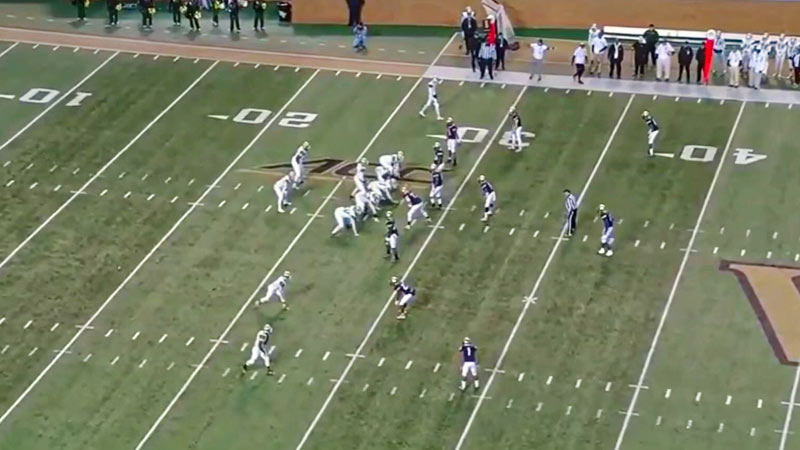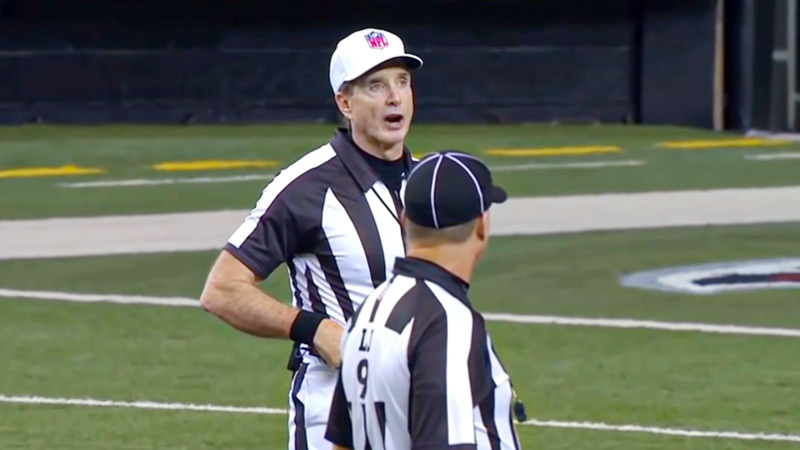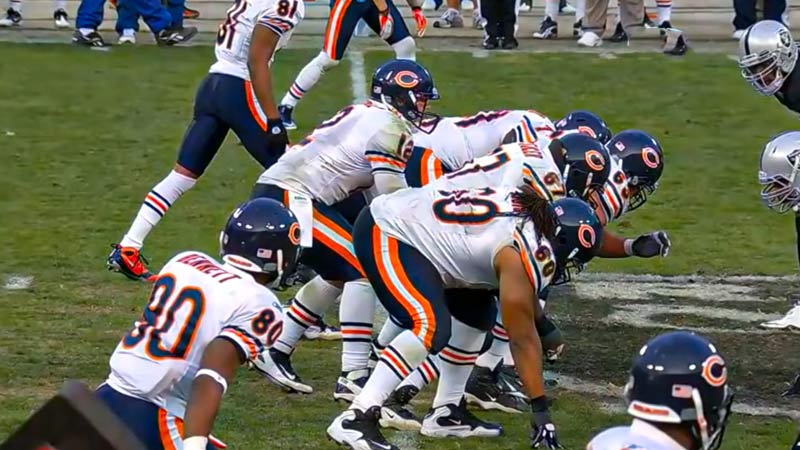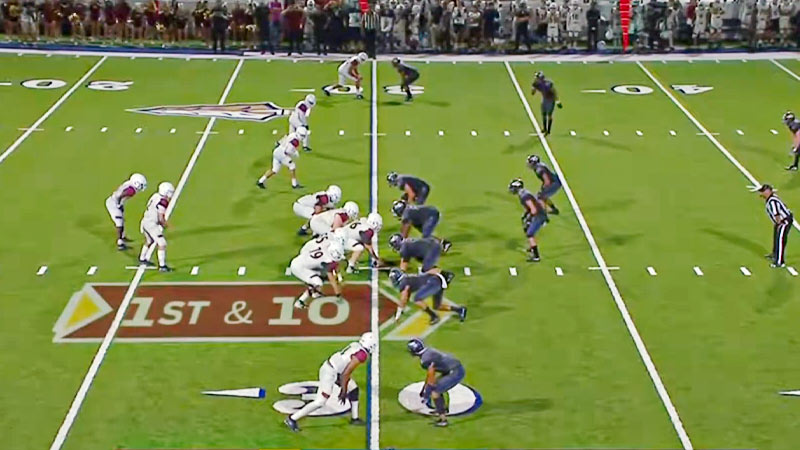The football forward pass rules have been a driving force behind the evolution and excitement of American football. From its inception as a game-changing innovation to its profound impact on offensive strategy and player roles, the forward pass has reshaped the very fabric of the sport.
In this blog post, we delve into the intricacies of football’s forward pass rules, exploring their history, influence, and significance.
Whether you’re a die-hard football fan or a curious newcomer to the game, read on to discover how these rules have shaped one of the most iconic aspects of American sports. So, stay focused.
What Is Forward Pass in Football?
The forward pass in American football is a fundamental offensive play where the ball is thrown forward from behind the line of scrimmage to an eligible receiver downfield. It is a strategic maneuver to gain yardage and score points by advancing the ball toward the opponent’s end zone.
The forward pass became a pivotal aspect of the game’s evolution, differentiating American football from rugby. The passer, typically the quarterback, aims to accurately deliver the ball to a receiver while the offensive line protects against the defensive rush.
Successful execution of the forward pass can result in substantial yardage gains, first downs, and touchdowns. However, an incomplete pass or interception can yield unfavorable outcomes. Skillful coordination, timing, and reading of the defense are crucial for a successful forward pass play.
What Is Football Forward Pass Rules?
In American football, the rules governing the forward pass are crucial for gameplay. Here are the key regulations concerning the forward pass:
Passer Position
The forward pass must be thrown from behind the line of scrimmage, the point on the field where the play starts.
Eligible Receivers
Only certain players are eligible to catch a forward pass, typically those on the offensive line and players positioned behind the line of scrimmage.
Passer’s Position at the Snap
The player throwing the forward pass, often the quarterback, must be positioned behind the line of scrimmage at the snap.
Pass Crossing the Line of Scrimmage
The forward pass must cross the line of scrimmage before being caught by an eligible receiver. If it does not, it’s considered an illegal forward pass.
Intentional Grounding
The quarterback cannot throw the ball away to avoid a sack without a reasonable chance for a receiver to catch it. This rule prevents intentional grounding.
Interceptions and Incomplete Passes
If a forward pass is intercepted by the defense or falls incomplete, the ball is dead, and the next down begins from the original line of scrimmage.
Fumbles on Forward Pass Attempts
If the passer fumbles the ball during a passing attempt, the ball is treated as if it were an incomplete pass.
Pass Interference
Both offensive and defensive pass interference can occur during a forward pass attempt. These penalties involve impeding a player’s ability to catch the pass.
Lateral Passes
A lateral pass (also known as a backward pass) is distinct from a forward pass. Lateral passes can be thrown in any direction, even parallel to or behind the line of scrimmage.
Quarterback’s Position After Snap
After the ball is snapped, the quarterback can move anywhere behind the line of scrimmage and still throw a legal forward pass.
How Do the Forward Pass Rules Work?

The rules governing the forward pass in American football are designed to maintain fairness, strategy, and safety in the game. Here’s a detailed breakdown of how these rules work:
Passer’s Position
The player attempting the forward pass (usually the quarterback) must be behind the line of scrimmage when the ball is snapped. This ensures that the pass is thrown from an eligible position on the field.
Eligible Receivers
Only specific players are allowed to catch a forward pass. These players usually include those positioned at the ends of the offensive line (wide receivers) and those positioned behind the line of scrimmage (running backs, tight ends).
Offensive linemen are generally ineligible unless they report to the referee as eligible receivers before the play starts.
Pass Crossing the Line of Scrimmage
To be legal, the forward pass must cross the line of scrimmage before it is caught by an eligible receiver. If the pass doesn’t cross the line of scrimmage, it’s considered an illegal forward pass and results in a penalty.
Intentional Grounding
A quarterback cannot intentionally throw the ball out of bounds to avoid a sack without a reasonable chance for the pass to be caught by an eligible receiver. If the quarterback does this, it’s considered intentional grounding and results in a penalty.
Interceptions and Incomplete Passes
If a forward pass is intercepted by a defensive player, the play is dead, and the team that intercepted gains possession. If the pass falls incomplete (not caught by anyone), the down ends and the next play starts from the original line of scrimmage.
Fumbles on Forward Pass Attempts
If the quarterback fumbles the ball while attempting a forward pass (e.g., the ball slips from their hand), the play is treated as if it were an incomplete pass. The ball becomes dead at the spot where the fumble occurred.
Pass Interference
Pass interference occurs when a defensive player impedes the ability of an eligible receiver to catch the pass, or when an offensive player significantly hinders a defender’s ability to defend against the pass. These penalties result in yards gained or lost, depending on which team committed the infraction.
Lateral Passes
While not directly related to forward passes, lateral passes involve throwing the ball backward or sideways. Lateral passes can be used to keep the play alive, allowing the ball to be advanced by players other than the quarterback.
Quarterback’s Movement After Snap
Unlike other players, the quarterback is allowed to move behind the line of scrimmage after the ball is snapped and still throws a forward pass. This movement is known as “rolling out” and is often used to create better passing angles or evade defensive pressure.
Penalties for Forward Pass Rules

Penalties for violating the rules related to forward passes in American football can have significant impacts on the game. Here are some penalties that can be incurred for breaking forward pass rules:
Illegal Forward Pass
If a forward pass does not cross the line of scrimmage before being caught, it’s considered an illegal forward pass. The penalty for this is a loss of down and a five-yard penalty from the spot of the foul.
Intentional Grounding
When a quarterback throws the ball away to avoid a sack without a reasonable chance for the pass to be caught by an eligible receiver, it’s intentional grounding. The penalty includes a loss of down and a ten-yard penalty from the spot of the foul.
Offensive Pass Interference
If an offensive player interferes with a defender’s ability to make a play on the ball (e.g., pushing off to create separation), offensive pass interference is called. The penalty is a loss of ten yards from the previous spot.
Defensive Pass Interference
If a defensive player interferes with an eligible receiver’s ability to catch a pass, defensive pass interference is called. The offense gains yards and an automatic first down, with the penalty being the larger of 15 yards or the yardage gained by the offense.
Illegal Touching
If an ineligible offensive player, such as an offensive lineman, touches a forward pass before it’s touched by an eligible receiver, it’s considered illegal touching. The penalty results in a loss of down and a five-yard penalty from the previous spot.
Unsportsmanlike Conduct
Unsportsmanlike conduct penalties can occur if a player, coach, or team personnel behaves in an unsportsmanlike manner, such as arguing with officials or taunting opponents. These penalties can result in significant yardage loss and potential ejection from the game.
Roughing the Passer
If a defender makes forcible contact with the quarterback after they have thrown the ball, a roughing the passer penalty can be called. This results in a 15-yard penalty and an automatic first down.
Personal Foul
Extreme cases of unnecessary roughness or unsportsmanlike conduct can result in personal foul penalties. These penalties come with significant yardage loss and potential ejection from the game.
It’s important to note that penalties can vary in severity based on the level of play (e.g., high school, college, professional) and the specific circumstances of the violation.
Impact of Football Forward Pass Rules

The football forward pass rules have had a profound impact on the evolution and strategy of American football. Here are some key ways in which these rules have shaped the game:
Transition from Rugby
The introduction of the forward pass rules in the early 20th century marked a pivotal departure from rugby-style play. This innovation allowed for a more dynamic and versatile style of offense, fundamentally distinguishing American football from its rugby roots.
Offensive Evolution
The forward pass revolutionized offensive strategy. Teams could now advance the ball downfield through the air, enabling more diverse play-calling and the development of various passing formations. This change led to the emergence of the quarterback position as a pivotal playmaker.
Strategic Depth
The forward pass added layers of complexity to the game. Teams had to balance running and passing plays, making decisions based on down, distance, field position, and defensive formations. This strategic depth heightened the mental aspect of the sport.
Scoring Potential
The forward pass significantly increased the potential for explosive plays and touchdowns. Teams could cover more ground quickly, altering the dynamics of scoring and the excitement for fans.
Quarterback’s Role
The quarterback’s role as a leader and decision-maker became central. Quarterbacks now needed to read defenses, make split-second judgments and execute accurate passes. This elevated the quarterback position to one of the most critical roles on the field.
Pass Protection and Rushing Defense
The forward pass led to the development of specialized pass-blocking techniques by offensive linemen and creative pass-rushing tactics by defenses. Teams had to find ways to pressure the quarterback while preventing deep passes.
Fan Engagement
The forward pass’s potential for big plays and touchdowns increased the game’s entertainment value, captivating fans with dramatic, high-scoring contests.
Rule Refinements
Over time, rule refinements have fine-tuned the forward pass rules, addressing issues such as intentional grounding and pass interference to maintain the balance between offense and defense.
Innovation and Strategy
The forward pass continues to be a canvas for innovation and strategic creativity. Teams develop intricate passing schemes, audibles, and play-action plays to outwit opponents.
Highlight Plays
Memorable plays like long touchdown passes, incredible catches, and game-winning drives are often the result of forward pass plays, becoming iconic moments in football history.
So, the football forward pass rules transformed the sport from its rugged origins into a dynamic, strategic, and spectator-friendly game.
They have played a crucial role in shaping the various aspects of American football as we know it today, from offensive tactics to player roles to the overall excitement of the sport.
FAQs
Why was the forward pass introduced in football?
The forward pass was introduced to American football in the early 20th century to differentiate the sport from rugby and to encourage a more dynamic, varied offensive strategy. This innovation allowed teams to advance the ball downfield through the air, opening up new dimensions of play.
How does the forward pass impact offensive strategy?
The forward pass revolutionized offensive strategy by enabling teams to cover more ground quickly and score through passing plays.
Quarterbacks became crucial decision-makers, reading defenses and executing accurate throws. Playbooks expanded to include various passing formations, adding layers of complexity to the game.
What are some penalties associated with forward pass rules?
Penalties for breaking forward pass rules include illegal forward pass (resulting in a loss of down and a five-yard penalty), intentional grounding, offensive and defensive pass interference (lost to an automatic first down), and more. These penalties can have a significant impact on the game’s outcome.
How has the forward pass affected player roles and positions?
The forward pass elevated the role of the quarterback to a key playmaker, responsible for both decision-making and accurate throwing. Additionally, receivers, tight ends, and running backs gained prominence as potential pass-catching targets, diversifying offensive options.
What role does the forward pass play in the game’s excitement?
The forward pass’s potential for explosive plays, long touchdowns, and dramatic comebacks adds an element of excitement to football. Highlight-reel catches and game-winning drives often involve successful forward pass plays, captivating fans and contributing to the sport’s popularity.
Wrapping Up
The football forward pass rules have transformed American football from its roots in rugby to a dynamic and strategic sport that captures the hearts of millions.
As we’ve explored in this blog post, these rules have had a far-reaching impact, shaping offensive tactics, player roles, and the very nature of the game.
From the iconic quarterback’s role to the thrilling downfield passes, the forward pass rules continue to define the excitement and strategy that make football an enduring American tradition. Thank you for your support.







